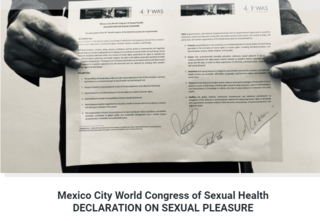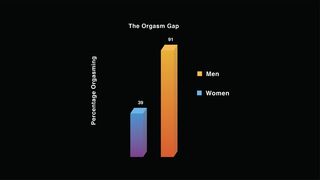Sex
Top Sex Tips for Women
Research-based sex tips to enjoy pleasure in the time of COVID and beyond.
Posted September 6, 2020 Reviewed by Gary Drevitch

September 4 was World Sexual Health Day. The theme this year was "Sexual Pleasure in Times of COVID-19." It's a safe bet that we all know what COVID-19 is at this point in time, so let's take a deeper diver into just what sexual pleasure is. The World Congress of Sexual Health created a Declaration of Sexual Pleasure in which it defined sexual pleasure as "... the physical and/or psychological satisfaction and enjoyment derived from shared or solitary erotic experiences, including thoughts, fantasies, dreams, emotions, and feelings." This declaration also declared, among other things, "access to sources of sexual pleasure is part of human experience and subjective well-being" and "sexual pleasure is a fundamental part of sexual rights as a matter of human rights." In other words, sexual pleasure isn't frivolous. It's an essential aspect of well-being and a fundamental human right.

We also know that people who identify as cisgender women (born with a vagina and identify as a woman) are having much less sexual pleasure than cisgender men (born with a penis and identify as a man). Indeed, research consistently finds an orgasm gap between cis-men and cis-women. As just one example, in one study, 39 percent of the women versus 91 percent of the men said they always or usually always orgasm during a sexual encounter. I detail the biggest cause of this gap in my TEDxUF talk and in my book, Becoming Cliterate: Why Orgasm Equality Matters—And How To Get It: Our simultaneous cultural overvaluing of penetrative sex (men's most reliable route to orgasm) and cultural devaluing of clitoral stimulation (women's most reliable route to orgasm). While covering the clitoris and including the concept of pleasure in sex education (as is argued for in the Declaration of Sexual Pleasure) and advocating for more realistic media images of women's pleasure (as is being done by The Clit Test) are ways to close the orgasm gap culturally, if you have a vulva, below you will find three science-based tips to close the orgasm gap in your own life.
Masturbate. After decades of research on effective strategies for helping women learn to orgasm, "directed masturbation" is the strategy with the most empirical support. Basically, directed masturbation is simply giving sex therapy clients the at-home assignment of pleasuring themselves. For those who are hesitant to dive in (no pun intended), this can occur gradually, with steps to take prior to masturbation including 1) seeing images of other women's genitals (e.g., such as at the site gynodiversity); 2) learning about how other women masturbate (e.g., from omgyes.com, for example); and 3) looking at one's own genitals with a mirror. All of these preliminary steps are followed by increasingly intense solo-stimulation, with one's hands, lubricants (because female genitals are not meant to be touched dry), and vibrators.

Vibrate. Many women do not have their first orgasm until using a vibrator. We know clitorises respond especially well to the sensation of vibration. And the research is extremely clear: Women who use vibrators have easier and more frequent orgasms and a male partner's acceptance of his female partner's vibrator use is highly related to her sexual satisfaction.
Communicate. Masturbating — with or without a vibrator — can be done alone, and reaching orgasm alone is the first, essential step to learning to orgasm with a partner. However, to transfer one's self-pleasure to partner-pleasure requires something else essential: Communication. It’s the bedrock to make your bed rock.
The research supports this statement: Good sexual communication is highly related to sexual satisfaction and orgasm rate. This finding goes in hand with the finding that a man's acceptance of his partner's vibrator use is related to her satisfaction. A male partner can't even begin the process of acceptance until his female partner communicates her needs to him. And while many women say they would feel pushy telling partners (especially new partners) about their need for clitoral stimulation, many men say they are turned on and grateful for such instructions.
In short, to orgasm alone, you just need your hands and a vibrator, yet to orgasm with a partner you will need your mouth, to tell him what you like and want. What every woman needs to orgasm is a bit different and even what the same woman needs can vary from encounter to encounter, so it's essential to be able to communicate your needs sexually.
In short, September 4 was World Sexual Health Day, and this year the goal was to bring sexual pleasure to the forefront, even and perhaps especially in these trying times. Sexual pleasure is the message that keeps giving.


